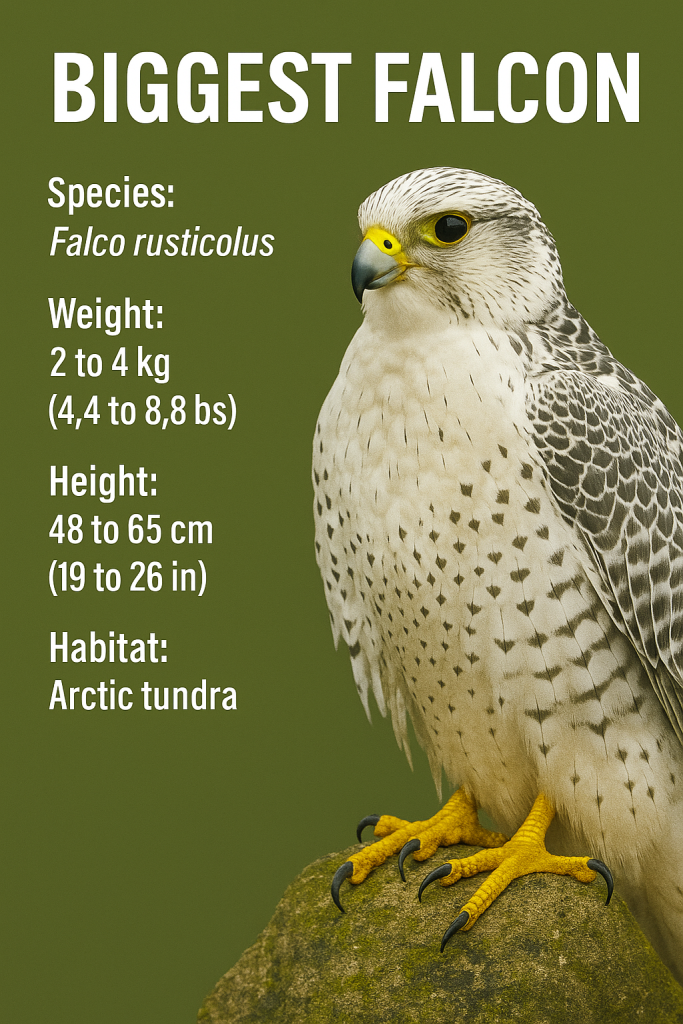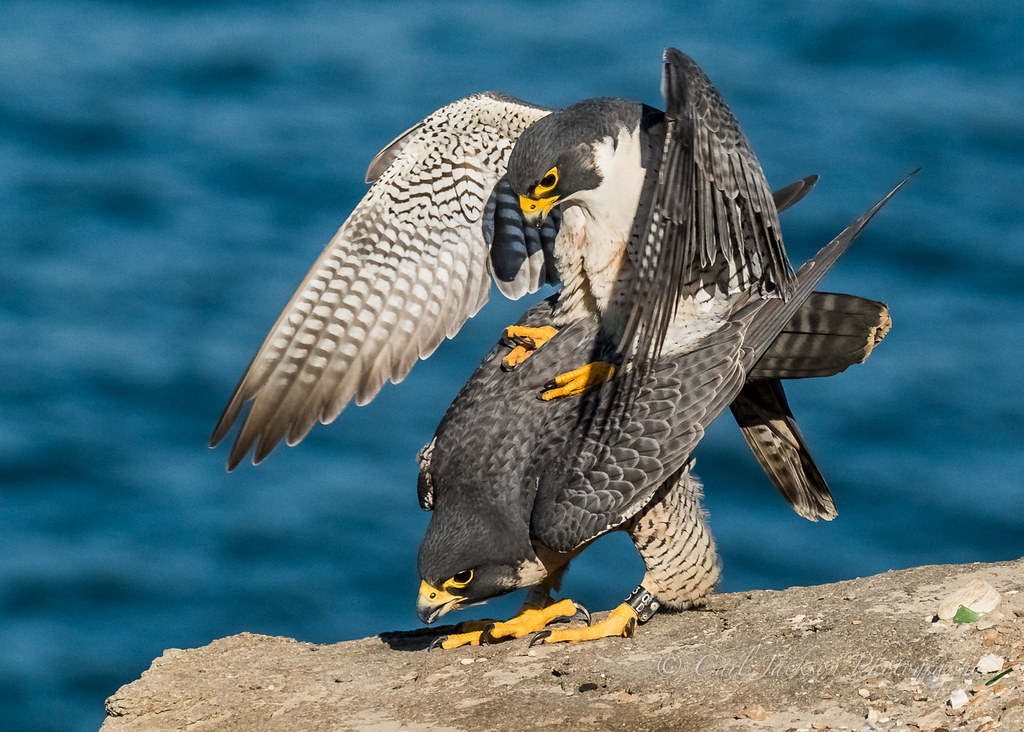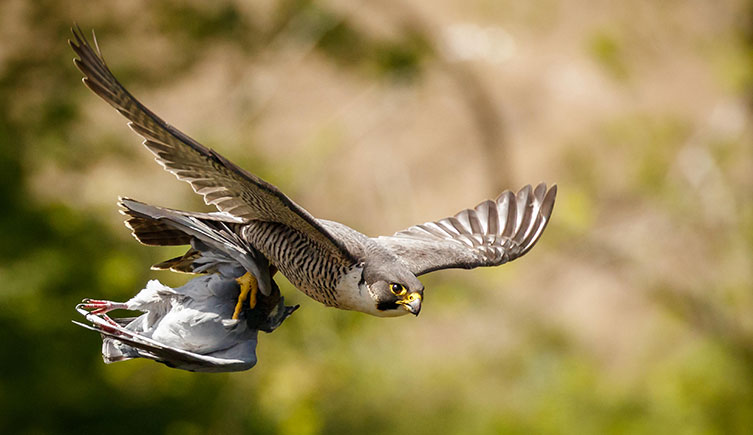Speciality of Falcon: Falcons are among the most revered birds of prey, known for their exceptional speed, keen eyesight, and hunting prowess. Belonging to the genus Falco, these birds are found across various continents, showcasing adaptability to diverse habitats. Their aerodynamic bodies, sharp talons, and hooked beaks make them formidable predators in the avian world.
Evolutionary Marvels
Over millions of years, falcons have evolved to become apex aerial hunters. Their unique physiological traits, such as a specialized beak structure and powerful flight muscles, enable them to execute high-speed dives to capture prey mid-air. This evolutionary refinement underscores their specialization in predation.
Cultural Significance
Beyond their biological attributes, falcons hold significant cultural importance. Historically, they have been symbols of power and nobility, especially in Middle Eastern cultures where falconry is a cherished tradition. Their presence in art, literature, and folklore across civilizations attests to their enduring allure.
Key Takeaways
- Falcons are specialized birds of prey with remarkable hunting abilities.
- They exhibit unique physical characteristics, including sharp beaks and exceptional vision.
- Falcons play a crucial role in maintaining ecological balance by controlling prey populations.
- Cultural practices like falconry highlight their significance in human societies.
- Conservation efforts are vital to protect falcon species from threats like habitat loss.
Understanding Falcons: An Overview
Characteristics of Falcons

Falcons are medium-sized birds of prey known for their speed and agility. They possess long, pointed wings and a notched beak, which aids in efficiently dispatching prey. Unlike other raptors, falcons kill with their beaks instead of their talons.
Table: Common Physical Traits of Falcons
| Trait | Description |
|---|---|
| Beak | Notched, adapted for killing prey |
| Wingspan | Ranges from 0.5 to 1.2 meters |
| Vision | Exceptional, aiding in spotting prey |
| Plumage | Varies by species; often camouflaged |
| Feet | Strong, with sharp talons |
Species Diversity: The Falcon Family
Notable Falcon Species
The falcon family comprises over 40 species, each adapted to specific environments. The Peregrine Falcon (Falco peregrinus) is renowned for its speed, while the Gyrfalcon (Falco rusticolus) is the largest, inhabiting Arctic regions.

Table: Selected Falcon Species
| Species | Habitat | Notable Feature |
|---|---|---|
| Peregrine Falcon | Worldwide | Fastest bird, diving at 240 mph |
| Gyrfalcon | Arctic regions | Largest falcon species |
| American Kestrel | Americas | Smallest falcon, vibrant plumage |
| Merlin | Northern Hemisphere | Agile hunter, prefers open areas |
Physical Attributes: Anatomy of a Falcon
Adaptations for Predation
Speciality of Falcon exhibit several anatomical adaptations that make them efficient hunters. Their streamlined bodies reduce air resistance, while their powerful flight muscles facilitate rapid acceleration.
Table: Anatomical Features
| Feature | Function |
|---|---|
| Hooked Beak | Tearing flesh from prey |
| Large Eyes | Enhanced vision for detecting movement |
| Strong Talons | Grasping and immobilizing prey |
| Feather Structure | Enables silent flight |
| Nictitating Membrane | Protects eyes during high-speed dives |
Diet and Feeding Habits
What Do Falcons Eat?
Falcons are carnivorous, primarily feeding on other birds, small mammals, and insects. Their diet varies based on species and habitat, but they are known for their preference for avian prey.
Table: Falcon Diet Composition
| Prey Type | Percentage in Diet |
|---|---|
| Birds | 70% |
| Mammals | 20% |
| Insects | 10% |
Hunting Techniques: The Art of the Chase
Strategies Employed by Falcons
Falcons utilize a combination of speed, stealth, and surprise to capture prey. The Peregrine Falcon’s stoop—a high-speed dive—is a prime example of their hunting prowess.
Table: Hunting Methods
| Method | Description |
|---|---|
| Stoop Dive | High-speed dive to strike prey mid-air |
| Aerial Pursuit | Chasing prey in flight |
| Ambush | Surprise attack from a concealed perch |
| Hovering | Remaining stationary mid-air before diving |
Reproduction and Lifecycle
Mating and Nesting Behaviors

Falcons are generally monogamous, with pairs often returning to the same nesting sites annually. They lay eggs in scrapes on cliff ledges or tall structures, with both parents involved in rearing the young.

Table: Reproductive Details
| Aspect | Details |
|---|---|
| Mating Season | Varies by species and region |
| Clutch Size | Typically 2–5 eggs |
| Incubation Period | Approximately 30 days |
| Fledging Age | 5–6 weeks after hatching |
Habitat and Distribution
Global Presence of Falcons
Falcons inhabit a wide range of environments, from deserts and tundras to urban areas. Their adaptability allows them to thrive on every continent except Antarctica.
Table: Habitat Types
| Habitat | Falcon Species Found |
|---|---|
| Urban Areas | Peregrine Falcon |
| Arctic Tundra | Gyrfalcon |
| Grasslands | American Kestrel |
| Forests | Merlin |
Role in the Ecosystem
Why Are Falcons Important to the Ecosystem?
As apex predators, falcons help regulate populations of smaller birds and mammals, maintaining ecological balance. Their presence indicates a healthy environment.
Table: Ecological Contributions
| Role | Impact |
|---|---|
| Predator | Controls prey populations |
| Indicator Species | Reflects ecosystem health |
| Scavenger | Occasionally consumes carrion, aiding cleanup |
Conservation Status and Threats
Challenges Facing Falcons
Despite their adaptability, falcons face threats from habitat destruction, pollution, and climate change. Conservation efforts are crucial to ensure their survival.
Table: Threats to Falcons
| Threat | Consequence |
|---|---|
| Habitat Loss | Reduced nesting and hunting grounds |
| Pesticides | Contaminated prey leading to poisoning |
| Climate Change | Altered migration patterns and food sources |
Falconry: A Historical Bond
The Art and Tradition of Falconry
Falconry, the ancient art of hunting with trained falcons, dates back thousands of years. Originating in the Middle East and Asia, it became a symbol of nobility and prestige in medieval Europe. Falcons were prized for their intelligence, speed, and loyalty, making them ideal companions for trained hunters. This tradition continues today in parts of the world, especially in Arabian culture, where falconry is not just a sport but a cultural heritage. The bond between human and bird in falconry is unique, built on trust, care, and mutual respect.
Table: Falconry Across Cultures
| Region | Falconry Practice & Significance |
|---|---|
| Middle East | Symbol of heritage and tradition |
| Europe | Practiced by aristocrats and royalty |
| Mongolia | Uses golden eagles alongside falcons |
| United States | Regulated modern sport and conservation aid |
Falcons vs Other Raptors
What Sets Falcons Apart?
Falcons are often confused with hawks or eagles due to their similar hunting styles. However, falcons belong to a different genus (Falco) and have distinct physical and behavioral traits. Unlike hawks, falcons kill their prey using their notched beak rather than their talons. They are generally smaller, faster, and more agile. Their flight is rapid with shallow beats, while hawks use more gliding techniques. These distinctions highlight the specialization of falcons in aerial predation.
Falcon vs Hawk Comparison
| Feature | Falcon | Hawk |
|---|---|---|
| Kill Method | Beak | Talons |
| Flight Style | Fast, flapping | Soaring, gliding |
| Wing Shape | Pointed | Broad, rounded |
| Speed | Extremely fast (240 mph dive) | Moderate |
Falcon Appearance: Size, Color & Features
How Falcons Look: Weight, Height, Color
Falcons vary widely in size and color across species. For example, the smallest falcon—the American Kestrel—weighs only 4 ounces, while the Gyrfalcon can weigh over 4 pounds. They are generally sleek with long, pointed wings and a narrow tail. Coloration varies but often includes earth tones like browns, grays, and whites, providing camouflage in the wild. Some species display dark “moustache” marks near the eyes. Males and females are similar, though females are typically larger.
Table: Falcon Physical Stats
| Species | Weight | Height | Color Patterns |
|---|---|---|---|
| Peregrine Falcon | 1.5–3.5 lbs | 14–19 inches | Blue-gray back, barred chest |
| Gyrfalcon | 2–4.5 lbs | 19–25 inches | White to dark gray |
| American Kestrel | 3–6 oz | 8–12 inches | Rusty back, blue wings |
Falcon’s Wingspan and Flight Mastery
The Wingspan Advantage
Falcons are famous for their remarkable wingspans, which enhance their flight control and speed. The Peregrine Falcon, for example, has a wingspan of up to 3.6 feet, enabling it to dive at speeds over 240 mph, the fastest of any animal. Their wings are shaped for agility and endurance, perfect for fast pursuits in the sky. Their feathers are stiff and narrow, allowing minimal drag. This aerodynamic build is part of what makes falcons such efficient hunters.
Table: Falcon Wingspans
| Species | Average Wingspan | Flight Speed |
|---|---|---|
| Peregrine Falcon | 3.3–3.6 feet | 200–240 mph (stoop dive) |
| Gyrfalcon | 4.0–4.7 feet | 50–70 mph (cruise flight) |
| Merlin | 2.0–2.3 feet | 30–50 mph |
Falcon Beak, Feathers, and Feet
Tools of Survival: Beak, Feet & Feathers
The beak of a falcon is specialized with a “tomial tooth,” a notch on the side used to snap the spinal cords of their prey. Their feathers are tough yet flexible, enabling stealth and swift maneuvers. Their feet are equipped with strong talons designed to grasp prey mid-air. Unlike scavengers like vultures or carrion birds, falcons prefer live prey, which requires powerful gripping and precision.
Table: Falcon Body Tools
| Part | Description and Use |
|---|---|
| Beak | Hooked, notched for spinal separation |
| Feathers | Stiff and aerodynamic |
| Feet & Talons | Grip prey mid-flight |
| Eyes | Spot prey from over a mile away |
Scavengers vs Predators: Falcons Explained
Falcons Are Not Scavengers
Unlike bald vultures or wolves that feed on carcasses, falcons are true predators. They prefer hunting live prey rather than feeding on carrion or flesh of dead animals. Their stomachs are adapted to digest fresh meat, and they avoid carcasses due to the risk of toxins. This predatory nature makes them distinct from scavengers and vital in balancing ecosystems.
Table: Scavenger vs Predator
| Feature | Scavenger (e.g. Vulture) | Falcon (Predator) |
|---|---|---|
| Feeding Type | Dead animals (carcasses) | Live prey |
| Beak Structure | Long and bald for digging flesh | Sharp, hooked for killing |
| Smell Reliance | Strong | Weak (falcons rely on vision) |
Falcons in Ecosystems
Ecosystem Balance and Falcon Role
Why are falcons important to the ecosystem? Falcons control rodent and bird populations, preventing overpopulation. They also reduce the spread of diseases by targeting weak or sick animals. As apex aerial predators, they are crucial indicators of environmental health. When falcon numbers decline, it can signal imbalance or pollution in the ecosystem. Their sensitivity to toxins like DDT in the past has helped inform environmental regulations.
Table: Ecosystem Services by Falcons
| Role | Environmental Benefit |
|---|---|
| Prey Population Control | Prevents overgrazing and imbalance |
| Biodiversity Maintainer | Supports healthy food chains |
| Ecosystem Indicator | Reflects pollution and habitat loss |
Falcon Mating and Reproduction Patterns
Reproductive Strategies

Falcon mating includes dramatic aerial courtship displays. Once bonded, males provide food while females incubate eggs. Most falcons lay 3–5 eggs per season. Unlike scavengers who may eat carrion to sustain themselves, falcons rely on fresh kills to feed their young. Their high-protein diet ensures the healthy development of fledglings.
Table: Reproductive Traits
| Trait | Falcon Characteristic |
|---|---|
| Mating Rituals | Aerial dances and food gifting |
| Egg Characteristics | Speckled, camouflaged shells |
| Hatchling Needs | Fed by regurgitated meat |
| Parental Involvement | High – both male and female participate |
Fascinating Falcon Facts
10 Facts About Falcons
- Falcons are the fastest animals on Earth.
- The Peregrine Falcon can dive at 240 mph.
- Falcons kill with their beaks, not talons.
- They are found on every continent except Antarctica.
- Falcons have exceptional long-distance vision.
- Female falcons are larger than males.
- They don’t build nests—many lay eggs on cliff ledges.
- Some falcons migrate thousands of miles each year.
- Falconry has been practiced for over 4,000 years.
- Falcons avoid scavenging carcasses due to risk of toxins.
Table: Summary of Key Facts
| Fact Category | Falcon Feature |
|---|---|
| Speed | Fastest dive of any bird or animal |
| Vision | Can spot prey over a mile away |
| Species Range | Over 40 distinct species worldwide |
| Predator Status | Apex predator in aerial ecosystems |
FAQs on the Speciality of Falcon Bird
1. What is the speciality of Falcon bird?
Falcons are known for their unmatched speed, sharp eyesight, and precision in hunting, making them elite predators of the sky.
2. What do falcons eat?
Falcons primarily feed on smaller birds, mammals, and insects. They avoid scavenging and prefer live prey.
3. Why are falcons important to the ecosystem?
Falcons help maintain ecological balance by controlling prey populations and indicating environmental health.
4. How fast can a falcon fly?
The Peregrine Falcon can dive at speeds of 240 mph, making it the fastest animal on Earth.
5. What are the biggest falcons?
The Gyrfalcon is the largest falcon, weighing up to 4.5 pounds with a wingspan over 4.5 feet.
6. Do falcons eat carcasses?
No, falcons prefer fresh prey. They avoid carcasses and carrion to prevent ingesting toxins.
7. How do falcons kill their prey?
Falcons use their beaks, specifically a notch called the tomial tooth, to sever the spine of prey.
8. What are some interesting facts about falcons?
They are the fastest animals, use their beaks to kill, and females are usually larger than males.
9. What habitats do falcons live in?
Falcons can adapt to a variety of habitats including mountains, deserts, forests, and cities.
10. What is the wingspan of a falcon?
Wingspans vary by species, with the Gyrfalcon reaching up to 4.7 feet and Peregrine up to 3.6 feet.
Visit: What Is The Speciality of to explore interesting facts about birds, countries and more.
